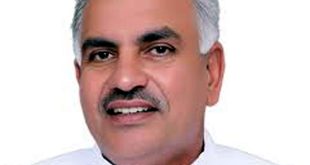
15th August 1947 is a special day in the history of India. Rejecting centuries-old slavery, India emerged as an independent nation in the world. A new country Pakistan was also formed from the land of India. A barrister Cyril Radcliffe drew the British partition line of 4.50 lakh square km.
Before independence, the total population of India was 40 crores, out of which about 8 crore people lived in the areas on both sides of the partition. More than 10 lakh people lost their lives in the massacre that started with the partition. The impact of the partition was so tremendous that both the countries have not been able to forget its wounds till date. At that time, 1.5 crore people came to India as refugees. This was the world's largest migration due to reasons other than war and famine.

The provinces of Punjab and Bengal suffered the most from the deadly game of religious partition. Two days after gaining independence on 15 August, that is on 17 August, the people of Punjab and Bengal province came to know about the partition. With the partition, hundreds of people suddenly lost their country. People living in East Punjab fled to West Punjab and people living in West Punjab fled to East Punjab i.e. India.
Suddenly people living in brotherhood became thirsty for each other's blood. Due to communal violence and clumsy planning, the partition process was unsuccessful and painful. Even the documents and maps proving the partition were lost. After the partition, where did the British like Radcliffe look back at India? Their intention was to get out of this huge subcontinent without any danger.

When India and Pakistan, who share the same history and heritage, were divided, the Ministry of External Affairs distributed not only land but also pencils, chairs, sofas, government pets. In which 21 typewriters, 31 pen stands, 16 chairs, 125 paper cupboards and 31 chairs for officers were sent to Pakistan. Joymooni elephant, considered a treasure of the forest department, was found in East Bengal but the elephant's mahout refused to leave India.
In 1920, when Hindustan was not independent, the remains of the 5000-year-old Indus Valley Harappan Civilization were found in Punjab and Sindh provinces. The Mohenjo Daro town near Larkana in Sindh was particularly controversial. The finds included black wheat, copper and bronze utensils, measuring stone, copper mirror, clay bullock cart, colored stones and tools and precious jewelry. The discovery of the remains of the Indus Valley Civilization was one of the most glorious events in the history of India. It was a strong proof that Indian civilization was as ancient as Egypt, Greece and China.

Jawaharlal Nehru has also described this in Discovery of India. All the objects found from this ancient civilization were also distributed. In which 60 percent of the remains were given to India and 40 percent to Pakistan. For example, the statue of the dancing woman remained with India while the statue of the meditating yogi remained with Pakistan. However, there was a difference of opinion between the officials of both the countries regarding the necklace of beads in gold thread. Neither side was ready to give up this precious necklace which was 5000 years old.
Pakistan believed that the gates of Harappa and Mohenjodaro could be recognised by the world. Eventually this precious necklace was split into two pieces. A piece of the necklace recovered from the Indian part is preserved in the National Museum in Delhi. An American historian has suggested that there should be unity over the necklace, but no party is ready to unite over the necklace, which is a symbol of partition.
Why did Radcliffe give Lahore to Pakistan at the time of partition?

Radcliffe, the joint chairman of the Partition Boundary Committee, had never seen India before the partition. He was not particularly familiar with the culture or geography of India; at the time of partition he had only carried out a general aerial survey of the possible boundaries of the two countries.
Radcliffe did not even have a detailed map of any district. Lahore, a city considered prosperous and happy at that time, had a considerable number of Hindus and was also the main center of the freedom movement, but Radcliffe admitted that Lahore was given to Pakistan for this very purpose. Large city in Pakistan's part.
 look news india
look news india
